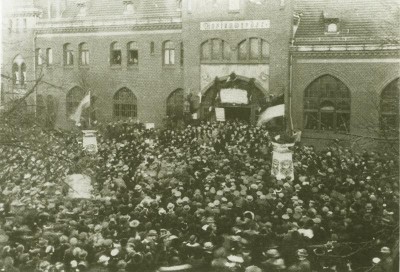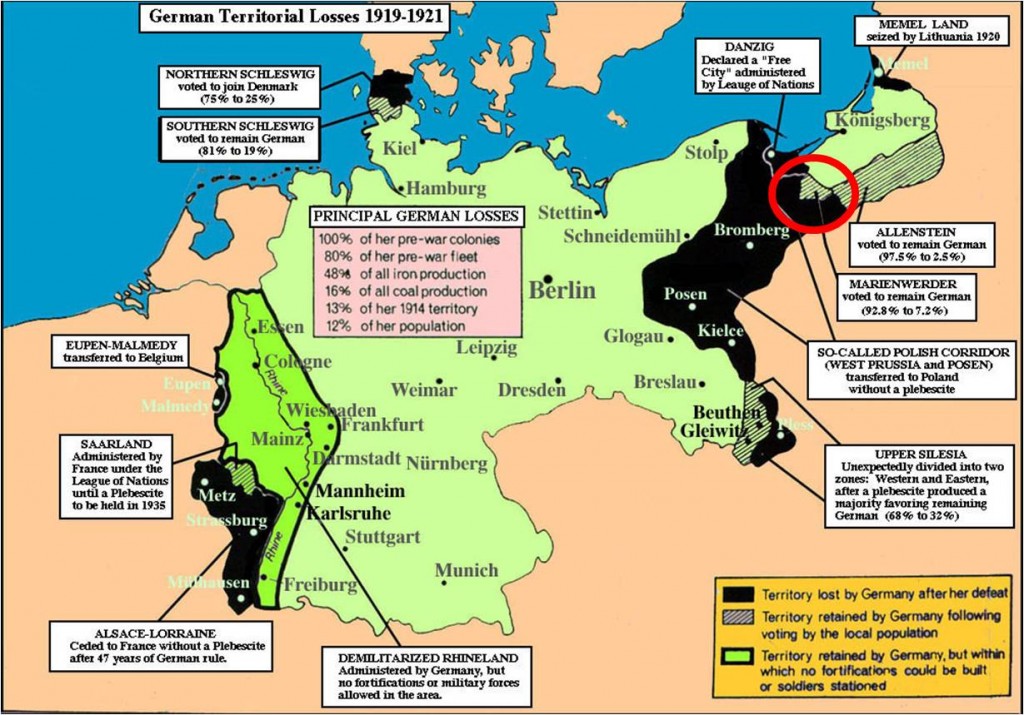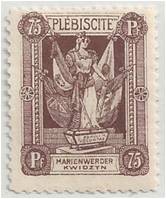ALBUM – view my Marienwerder Album
Fast Facts
Region: Germany / Poland Area
Group: Occupations and Plebiscites post wwI
Classification: Plebiscite
Prior Regime: The German Empire
Key Dates:
1919, Jun – Treaty of Versailles
1920, Feb 12 – British and Italian troops arrive
1920, Jul 11 – Plebiscite held
1920, Aug 16 – Handover to Republic of Germany
Following Regime: Germany, Weimer Republic
Scott Catalogue: (Marienwerder) #1-53
Pick Catalogue: none
History

After the defeat of the German Empire in World War 1, the terms of surrender were ultimately agreed and codified in the Treaty of Versailles, signed on 28 June, 1919. The terms of the treaty required Germany to give up territory to neighbours in Europe as well as all of its foreign colonies in Africa and Asia. In the East Prussia area: a large portion of land would be given to the newly independent Poland, Danzig (Gdansk) would become a Free City, Memel (Klaipėda) was made a protectorate of the League of Nations (although Lithuania occupied and annexed the region in 1923), and Allenstein and Marienwerder were allowed to have a vote (or plebiscite) to determine whether they would become a part of Germany or Poland. To the north, Schleswig would conduct a plebiscite to determine whether it would be part of Denmark or Germany. To the West, Eupen and Malmedy would go to Belgium, Alsace and Lorraine would become part of France, and Saar would be administered by the French for the League of Nations, and referendum would be held 15 years later, in 1935 to determine their fate. To the southeast, Upper Silesia and Eastern Silesia also planned to conduct plebiscites to determine their fate.
As the Allies decided to establish Poland as an independent state, a large part of West Prussia was awarded to Poland (along with its large German population) to give the new nation access to the Baltic Sea. While this access to a seaport was considered necessary for the survival of the country, it created a strip of land, often called the Polish Corridor that essentially split East Prussia off from the rest of Germany.
Marienwerder (Kwidzyn, in Polish) was a small district in East Prussia with a large German population, therefore according to the Treaty of Versailles was allowed to have a plebiscite to determine whether they would be part of Germany or Poland. Marienwerder was placed under the authority of the Inter-Allied Commission, and British and Italian troops began arriving on 12 February, 1920 to oversee the plebiscite. While the German Army had already left the area, civil and municipal administration continued under existing German authorities who were accountable to the Commissions. On 11 July, 1920, the vote was held and almost 98% of the voting population chose to remain with East Prussia in Germany. The formal handover from the Commission to German authorities occurred on 16 August, 1920 and Marienwerder, along with Allenstein became part of East Prussia.
Marienwerder remained under the control of Germany until the end of World War 2, when it became a part of an expanded Poland

Stamps
 ALBUM
ALBUM
Beginning in March of 1920, fourteen stamps were issued specifically for the Marienwerder plebiscite. The design featured a woman surrounded by flags, which was intended to be allegory of supervision of the allies over the plebiscite. The stamps were issued in 14 denominations and were inscribed “Commission Interallièe” at the top and “Marienwerder” at the bottom of the design. Two different papermakers were used with different watermarks, Also stamps are know to be partially or fully imperforate.
Early in July of 1920, the stamps were reissued with new inscriptions. “Plebiscite” was printed a the top, and the Polish name for Marienwerder, “Kwidzyn” was added to the bottom.
Additionally, stamps of Germany, overprinted “Commission / Interallièe / Marienwerder” were issued beginning in March, with the higher denominations surcharged onto lower denomination stamps. In July, 4 additional higher denomination stamps of Germany wre issued with the same overprint.
Banknotes
While no Marienwerder specific banknotes were issued during the plebiscite era, a great period of inflation broke out in Germany after the war, causing great strains on the economy. In the early 1920’s, Notegeld (emergency money) was issued in many local regions, Marienwerder included. The notes were meant to used for local bartering as the German Mark plummeted and metal was in short supply. The bright colored notes featuring local buildings or folklore created a strong demand from collectors. Quite often these sets, known as “Serienscheine” (serial paper money), were never actually produced for circulation, but instead sold to dealers.
Links
East Prussian Plebiscite at Wikipedia
Plebiscite issues make interesting collection from Linns
Marienwerder Plebiscite at Stamp Collecting World
Marienwerder from the BigBlue 1840-1940 blog by Jim Jackson




